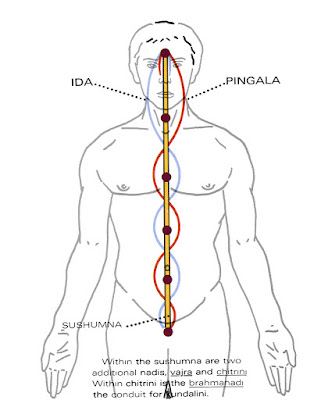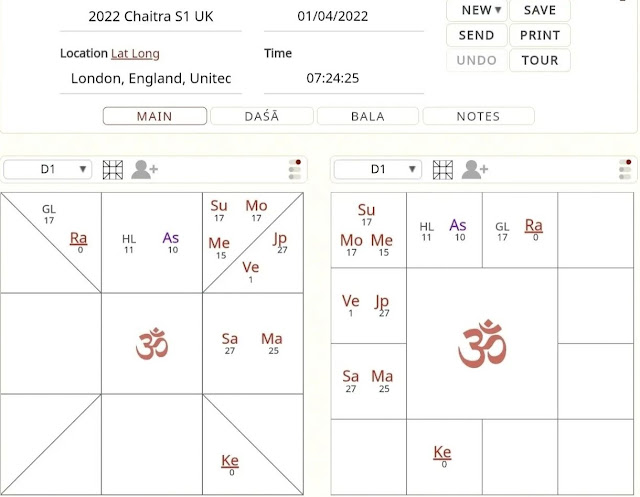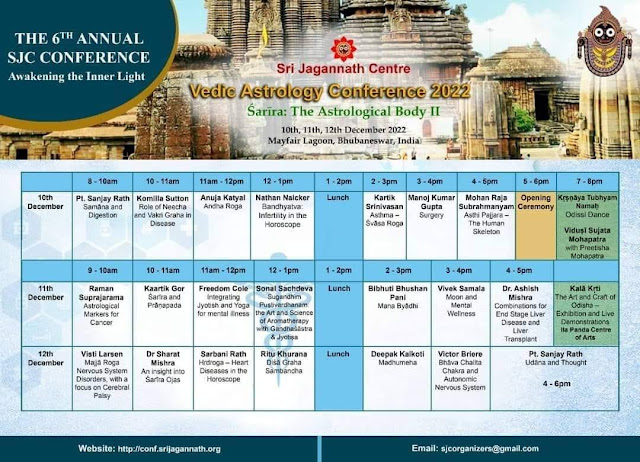The Lunar Nodes and Yoga
The lunar nodes are a deeply significant part of Vedic astrology, and this article will explain the esoteric significance of their mythology as well as present indications to their relevance in Yoga philosophy and its practice.
In God Talks with Arjuna: The Bhagavad Gita, Paramahansa Yogananda presents an in-depth model for the structure of the spiritual, energetic, astral, and physical bodies and explains their interrelation as they are conceived in yogic tradition (1). The main point is that the physical body is a map of all other bodies connected to it. Just as the physical body is operated by a nervous system with its primary brain and spine, the astral and spiritual bodies similarly have a system of pathways which are coordinated by a brain and spine. Each system is subtly connected to its counterpart and together, there is a holistic model for being which can be viewed from the a contextual or effective perspective.
Just as the physical body is enlivened by breath, the astral or energetic body is enlivened by prana or life-force/flow according to this model. The prana is subtly linked to the breath in the physical body. The five types of prāṇa in the astral body coordinate the flow of functions in the physical body: crystallization (Saturn), assimilation (Mercury), metabolism (Mars), circulation (Jupiter), and elimination (Venus). Each prana type corresponds to an element in astrology. The energy pathways of the astral body are called nāḍī and are linked to the nervous system of the physical body. Nerve pairs form plexuses at important junctures in the physical body, the most important of which are those which lie along the spinal column and which correspond to important endocrine functions within the physical body. These most important nerve plexuses are five in number: the cervical, dorsal, lumbar, sacral, and coccygeal nerve plexuses, which correspond to five energy centres or chakras (wheels or lotuses). Two remaining energy centres are contained within and above the physical brain. The energy of these centres flows into the main spinal column of energy called the suṣuṁna to the astral brain.
On either side of the main spinal energy channel, entwine two other primary energy channels or nāḍī: the Īda (corresponding to the Moon), and Piṅgala (corresponding to the Sun) and they wrap around the energy spine, coinciding at each major energy centre, to regulate and nourish them. The meaning here is that specifically it is the union of the Sun and Moon energies which speak to being positively willful (Sun) and nourished (Moon) in our life. The natal lunar phase, and the degree separation between the Sun and Moon in particular, is important in Vedic Astrology, and is an indication of how we relate to the things and people that are important in our life. This degree separation between the luminaries is called tithi in Vedic Astrology, and forms part of the five-fold classification of time called Panchanga. The tithi which occurs in the natal zodiacal month is of primary importance in understanding the influences of the year which will assist or constrain one’s ability to be and be nourished in the year ahead.
This relationship between the Sun and the Moon is also important in yoga practice. That day in the month which repeats your natal lunar phase degree separation between the Sun and Moon precisely, is an important day on which one can enter into deep prayer or meditation easily. Astrologically this is useful as well, because on this day a person can realize and understand how their Sun and Moon energies manifest in their life. The Sun and Moon speak to how we come alive in our life, and in that context, one can appreciate the significance given to eclipses which are times when the “lights go out” in the case of solar eclipses, and times when nature seems to “goes wild” in the case of lunar eclipses. So it is valuable to devote some time to study the ideas behind eclipses, and in this article I am describing them in the context of the eastern tradition in India.
In Hindu mythology, there was a demon called Svarbhānu. Svar: lustrous, bright space or sky, the region of planets or constellations, the region of space above the sun or between the sun and the pole star (as viewed from earth). Bhānu: ray of light, splendour, mighty, countenance. Svarbānu is that mighty lustrous being that occupies the region between the Sun and the Pole Star. This space was conceived of as a demon because it is separate from the gods in heaven of the constellations and also separate from the planets (who were conceived of as gods).
There was a great effort made by both gods and demons to churn the ocean of milk in order to obtain the nectar of immortality. Svarbānu wanted to steal the nectar of immortality from the gods in heaven. So he disguised himself as a god and sat amongst them waiting to receive a ration of it. Vishnu, as the preserver of creation, decided to take the form of Mohini, a great enchantress dancing girl who is like a femme fatale character, enticing her victims to their doom. Moha means the delusion that comes with being overly attached to something. Mohini is the feminine form of this overpowering desire. She took up the role of handing out the rations to those who were present. The beauty and allure of this form was too distracting for anyone to discern that a demon was disguised in their midst so Mohini distracted both gods and the demon Svarbānu. When the turn came for Svarbānu to drink a portion of the nectar, and just before he could swallow it, Mohini cut off his head. The head of Svarbānu was called Rāhu (the North Node), and the rest of his body is called Ketu (the South Node).
The entire story of Svarbānu is a depiction of the soul’s descent into matter. In order for the world show to go on, Vishnu as the agency which preserves creation in motion for the sake of souls to obtain experience to evolve, in the form of Mohini, covers the gross material manifestation with all its bindings of attraction and attachment with the alluring attractiveness and promise of eternal happiness from it. The sum total of Nature as material manifestation is given a feminine form because it is a container which receives the souls and also provides all the plethora of experience and things which the soul desires. For the sake of being born, our higher faculties (the gods) are also clouded by the attractiveness of material manifestation at this time. The Pole Star in Hinduism indicates the region of ancestors. In a sense, it also indicates the point from which souls descend back to earth – it is sort of gateway between these worlds. In yogic tradition it is also believed that when a soul is ready to manifest, a beam or ray shines forth in the astral world which attracts soul(s) toward it that are in affinity for manifestation. This light beam then rapidly connects and grounds the awareness into the physical body for birth, the process being as quick and luminous as a flash of lightning. This body of light and medium of travel of consciousness between the Pole Star and the solar system is Svarbānu.Now, within the suṣuṁna nāḍi is another subtler pathway that is completely in the astral body, and it is called vajra. Vajra means lightning bolt. It is through the Vajra astral pathway that the consciousness descends from the astral body into the physical body, just as lightning strikes the earth. This has affinity to Rāhu whose name means “that which seizes”, and indicates the will that is obsessed with material gain and attachments and which binds the awareness to matter. In Vedic astrology, Rāhu is called Mohakāraka or the activator/significator of material attachments.
Ketu means a blinding “apparition or ray”. Ketu is also called Chitragupta in Hindu mythology, who is an attendant of the God of Death and whose role is to record all impressions done by actions, words, and thoughts in the akasha or etheric record. Now, even within the vajra astral spine there is another more spiritual spine called chitra and it is through this spiritual spine that a soul leaves the body taking with it all its accumulated record of deeds as imprint. And within this spiritual spine there is another subtler channel called the brahmanāḍi. Liberated masters and other realized souls pass through the chitra channel and into the brahmanāḍi upon death, which guarantees a direct path back to source without rebirth. So Ketu’s role is twofold. As a blinding ray or apparition, it makes us aware of the futility of our multifarious and obsessive attachments in matter (Rāhu) and indicates those circumstances where we encounter loss and dissatisfaction with material acquisitions, both being an echo of what we will have to experience upon death when we leave all material things behind, but also an echo of the higher calling of the soul when it eventually is dissatisfied with material things on a cosmic level and wishes to seek liberation and a way out. Appropriately then, in Vedic Astrology, Ketu is called Mokshakāraka, the activator/significator of liberation from material attachments.Svarbānu is that which occupies the region between the Pole Star and our solar system with the planets, and therefore is closely related to both the descent of the soul into material manifestation through Rāhu in the vajra astral channel, as well as the ascent of the soul out of material manifestation at death through Ketu in the chitra spiritual channel, and through final liberation from both beyond chitra through the brahmanāḍi causal channel.
Both Rāhu and Ketu indicate desires and thoughts that are obsessed with material manifestation. Rāhu is obsessed with getting more, and Ketu is obsessed with losing them (at least while attached to the body) or giving them up (when concerned with liberation). They therefore for most people, indicate specific fears behind the thoughts or beliefs we carry as foundational to our experience in life and our decision-making process. Rāhu and Ketu then are very appropriate as the lunar nodes, because they indicate the extremes that bear upon the decision-making process which is indicated by the Moon in Vedic astrology.
During meditation, Rāhu will represent those thoughts which disturb one’s peace because there is underlying fear of never having enough that is associated with them, and being dissatisfied with what one has or creating an unrealistic perception of how much one has as a safety response. For example, a person may have a million pounds but be craving more. Similarly, during meditation a thought may come as a little disturbance but it carries with it a lot of concern about material security that one finds the mind dwelling on all sorts of questions and fears and the meditation is broken. It is helpful in meditation when this happens to imbibe the fullness and bounty of nature – of ALL material manifestation and let those thoughts be satisfied with the enormous fullness of Nature. This is why the deity said to appease Rāhu is Nirṛti as the Fearsome Mother and Activator of Cosmic Nature as she is the only one who can satisfy the material appetite of the boundless head. The worship of Nirṛti is not meant to destroy Rāhu, it is meant to bring us into alignment with an uncompromising intensity of spirit to equal and match the obsessive nature of Rāhu in the area of life indicated, and its corresponding thoughts. Because it is not about suppressing them, it is about us becoming 100% involved with the area of life Rāhu is affecting, because we need to in order to fulfill a larger destiny. Manifesting something materially in the area of life indicated by Rāhu actually plays a role in our evolution, but through matter.
Ketu, on the other hand, is like a void, or the constant feeling of futility with everything. A person may be a good partner, but they may not think relationships are important or necessary or relevant for life and thereby when they are in relationships they may act in a such a way that creates discord and is a sort of self-fulfilling prophecy which confirms their fears and apathy to begin with. But it is an apparition or blinding ray because one cannot truly see or understand that aspect of oneself. So the area of life impacted by Ketu, we handle blindly, as if the thing we are trying to shore up and secure sits behind a blinding ray of light - we have a sense of what it is, but we lack the clarity of vision or insight to know really why we are putting so much of our energy there and we may not even know what we want to do with the object once it is obtained. So Ketu prevents us from going back into past habits that we don't need to focus on. This is practical in the path of yoga in that it is wise to go into the Ketu area of life with no expectations or prejudices whatsoever. In this sense, giving the desire for it up before it is even acquired actually helps to bring a sense of normalcy to the otherwise obsessive thoughts and negative beliefs that lie in that area of life. During meditation Ketu thoughts will be those which one pushes down vindictively without trying to understand them properly – this can be equally dangerous because suppressing them gives them more force when they resurface again later. It is helpful to allow these thoughts to come, to consider them with respect in a detached manner, and let them go with love being aware that they come from the past and in the present are functioning as appearances only.
Since Rāhu and Ketu was once a whole body which Vishnu decapitated and flung across the sky, this means that if Vishnu separated them, it is in our best interest to keep them separate. Rāhu is said to be the material reason for manifestation into this life, and Ketu is the material hangups from a previous time. It is best to keep previous hangups as previous hangups and not focus on the whys of hows of Ketu too much. We must keep our gaze forward. The magnetic axis of the lunar nodes attracts the mental constitution (Moon as mind) into material manifestation (Moon as body). So one has received a mind and body combination that is in tune with the lunar nodes in your life. As Vishnu indicates, we are to keep the nodes separate. It is not about "joining them", it is not about "putting the head back on the body" as some astrologers suggest! Why would you undo what Vishnu has done to preserve the immortal nectar of the soul? If one truly unites Rāhu and Ketu, the demon Svarbānu will again attempt to take over the life force and use it and abuse it for all sorts of nefarious things which are not conducive to an (smoother) evolutionary process of being. The obsessive-compulsive nature of the lunar nodes when united outside of yoga practice, acts like a thief in the night to create such disturbance as to remove both our material and inner contentment with life as it is.The deeper meaning of Vishnu decapitating this demon for the sake of the nectar of immortality, is that we must disconnect ourselves from being overly attached by the push and pull of the lunar nodes, and preserve (Vishnu) our life force (nectar of immortality) which rides upon the breath. It is no wonder that the exaltation of the Nodes occur in Gemini and Sagittarius, the Inhalation and Exhalation motor functions of the lungs. It is through meditation and alignment of these two wings of the breath and life force it carries, that the Nodes are "exalted" out of material contamination.
The exhalation and inhalation process is a like the flapping of a bird, the golden or Sattvic eagle-vehicle of Vishnu, called Garuda. In mythology, then it is no surprise that Garuda is famous for devouring nāgas or serpents everywhere - and what greater serpent than Rāhu and Ketu, the head and tail of the Great Sky Dragon. In meditation then we are reminded that the real Sustainer of life (Vishnu) is the life which rides upon the breath. It is this life that gives meaning and relevance to everything else in our life which we expend energy to sustain. Our destiny is not about uniting the Nodes, our destiny is about managing the life force in such a way that we free ourselves from their push and pull influences and bindings upon our freedom to realize and be who we really are.
Therefore, the model of the physical, energetic, astral, and spiritual bodies and their interrelationships contain deep significance with the planetary symbolism. In this article presented the esoteric significance of the mythology of the lunar Nodes in Hindu mythology, as well as indicated their relationship to Yoga philosophy and practice.
Footnotes
1. God Talks with Arjuna: the Bhagavad Gita, Paramahansa Yogananda, Self-Realization Fellowship, Los Angeles, 2001, pg. 60-62.






